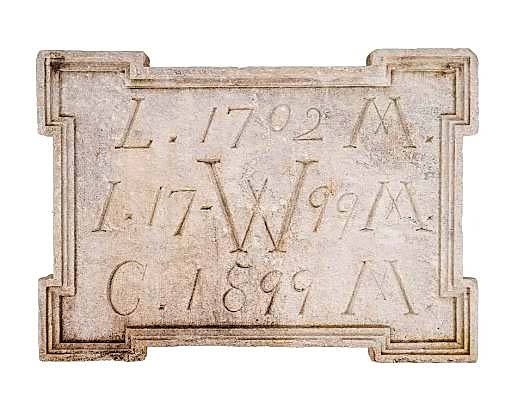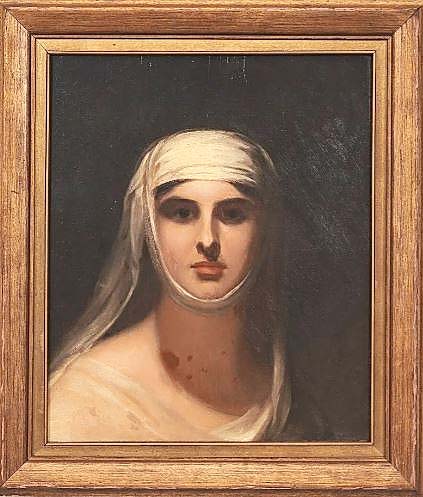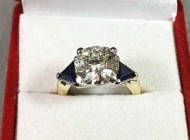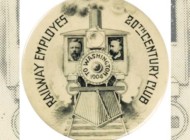
The sale was led by a large Chinese porcelain famille rose punch bowl from the Eighteenth Century that sold for $5,938. The bowl’s interior was illustrated with a mountainous landscape, its exterior featuring figures on boats.
Review by W.A. Demers; Photos Courtesy Wiederseim Auctions
PHOENIXVILLE, PENN. — Theodore “Ted” Wiederseim and staff put together a diverse auction featuring more than 500 lots on April 12, including a large collection of fine art, one of its star lots a Thomas Sully portrait of Fanny Kemble as Juliet, along with works by Alexander Pope and William Henry Hunt; and several tall case clocks, most notably a rare Daniel Quare clock owned by Benjamin Franklin’s grandson, Benjamin Franklin Bache. Also notable was a Chinese porcelain collection, sterling silver, period furniture and more. The sale totaled $188,062 with a 91 percent sell-through rate and participation by 4,000 registered bidders on LiveAuctioneers and Invaluable.
The sale was led by a large Chinese porcelain famille rose punch bowl from the Eighteenth Century that sold for $5,938. The bowl’s interior was illustrated with a mountainous landscape, its exterior featuring figures on boats. Resting on a wooden stand of a later date, the bowl measured 7 inches high by 16 inches in diameter.
A pair of Chinese porcelain cylindrical vases also proved desirable, selling for $4,688. Each Eighteenth Century vase was decorated with colorful figures with birds, landscapes and figures and measured 16¾ inches high by 8¼ inches in diameter.

This historic limestone date stone is a surviving reminder of Rehobeth Farm, a 1702 stone house on the edge of Valley Forge in Tredyffrin Township, Penn. It was removed from the gable of the home that served as the headquarters for Nathaniel Greene during the Revolutionary War and was torn down in 1980 to make way for an executive park. Surpassing its $200/300 estimate, the 200-pound stone brought $2,875.
A historic limestone date stone removed from the gable of Rehobeth Farm, a 1702 stone house on the edge of Valley Forge in Tredyffrin Township, Penn., squashed its $200/300 estimate to land at $2,875. Rehobeth Farm served as the headquarters for Nathaniel Greene during the Revolutionary War. Owned by the Walker family and later the Hires family, it was torn down in 1980 to make way for the Bay Colony Executive Park, so the 31-by-42-by-4-inch, 200-pound stone is the home’s surviving reminder.
Also of historical importance was a Daniel Quare (1648-1724), London, Queen Anne tall case clock that struck $5,313, with a bidder from Ireland on the phone prevailing. The 91½-foot-tall clock had all the usual elements: caddy top, walnut case with mulberry veneered door and conforming base with eight-day works, pewter chapter ring, Roman and Arabic numerals and brass spandrels. But it was a brass plaque inscribed on the inside of the door that provided the historical juice. The plaque read, “This stately British tall case clock resided in the home of Benjamin Franklin Bache (1790s who was the grandson of Dr Benjamin Franklin) until his death in 1798. It was acquired by him upon the death of Caspar Wistar of Market Street, Philadelphia, who created the first successful glassmaking business in the colonies, (Allowaystown, N.J.) he funded it through land speculation, once owning most of Berkshire County, Pennsylvania.”
There was more provenance interest provided by a Thomas Sully (1809-1893) oil on wood panel portrait of British actress Frances Anne “Fanny” Kemble (1809-1893) in the role of Juliet, titled “Juliet Risen from the Tomb” Act 5, Scene 3 signed T.S. 1830 verso…”

Breaking through the polished oak barrier is this Thomas Sully oil on wood panel portrait of British actress Frances Anne “Fanny” Kemble in the role of Shakespeare’s Juliet. James Kilvington, a Dover, Del., antiques dealer specializing in American and English period decorative arts, was the successful bidder for the portrait, which sold for $5,000. He was bidding on behalf of the Philadelphia Club, a private gentlemen’s club founded in 1834 of which he is a member. “She [Kemble] was married into the family that built the club,” said Kilvington. The portrait will be displayed prominently somewhere in the club, according to Kilvington, “the first female on its walls,” he remarked.
Kemble came from a theatrical family and in addition to acting was a well-known and popular writer and abolitionist. Her published works included plays, poetry, memoirs, travelogues and works about the theater. More important, her abolitionist sentiments were at odds with those held by her husband, wealthy Philadelphian Pierce Mease Butler, whom she had met on an American acting tour with her father in 1832. Butler’s grandfather was Major Pierce Butler, a Revolutionary War veteran and Founding Father who represented South Carolina at the Constitutional Convention. Butler The Butler family owned cotton, tobacco and rice plantations of his grandfather on both St. Simon’s and Butler Islands, in Georgia, enslaving hundreds to work on the properties.
Kemble wrote in a private journal she kept during her time on her husband’s plantations, describing the conditions of the slaves on the plantation, as well as documenting her own rising abolitionist sentiments.
James Kilvington, a Dover, Del., antiques dealer specializing in American and English period decorative arts, was the successful bidder for the portrait, which sold for $5,000. He was bidding on behalf of the Philadelphia Club, a private gentlemen’s club founded in 1834, of which he is a member. He and several other members ponied up to buy the portrait and donate it to the club. “She [Kemble] was married into the family that built the club,” said Kilvington. “Her husband sold the building to the Philadelphia Club in the early 1850s. She was also the grandmother of one of the club’s presidents, Owen Wister, himself a famous writer of Western literature and writer of the club history.
The portrait will be displayed prominently somewhere in the club, according to Kilvington, “the first female on its walls.”

Alexander Pope Jr’s oil on canvas of game pheasants titled “A Hunters’ Bounty” more than doubled its high estimate, bringing $5,313. Signed lower right and mounted in a gilt frame, it measured 33 ½ by 25½ inches (sight).
Another painting of note in the sale was Alexander Pope Jr’s (1849-1924) oil on canvas of game pheasants titled “A Hunters’ Bounty.” It more than doubled its high estimate, bringing $5,313. Signed lower right and mounted in a gilt frame, it measured 33½ by 25½ inches (sight). Specializing in animal and still life paintings, Pope briefly studied sculpture with the prominent artist William Copley but was a self-taught painter.
Among the silver highlights, a Nineteenth Century centerpiece by French artist Francois Froment-Meurice (1802-1855) took $1,250. It was an agriculture centerpiece trophy in the form of a plow and oak tree figures. Tested 900 silver, the 8-by-9½-inch-diameter piece weighed 35 troy ounces.
Prices given include the buyer’s premium as stated by the auction house. Wiederseim’s next sale will be at the end of May, date to be announced. For additional information, 610-827-1910 or www.wiederseim.com.











